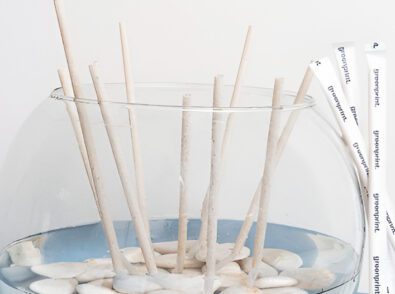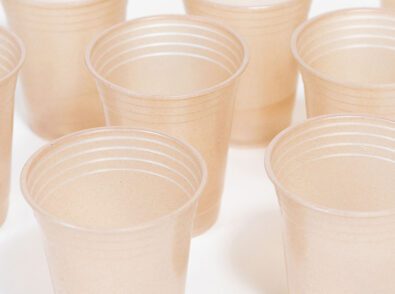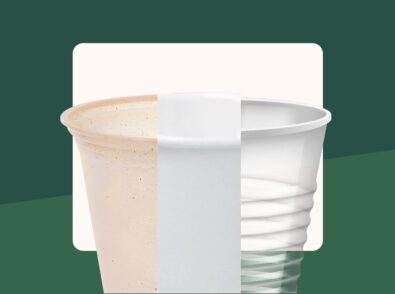All About Agave Fibers
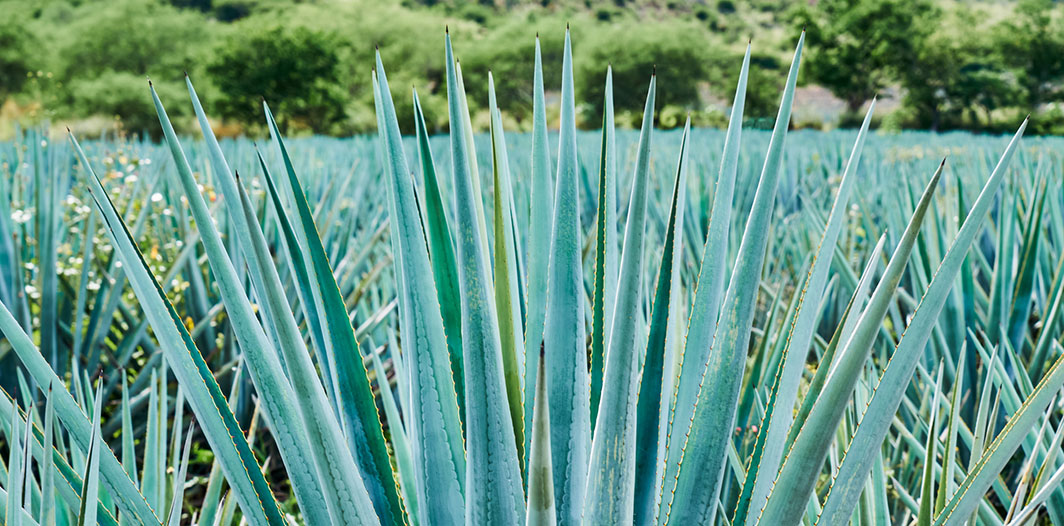
Natural fibers come from plants, animals and natural processes. They are an excellent resource as they are biodegradable and renewable. Since we can grow or extract different natural fibers in various climates across the globe, there are fewer carbon emissions associated with using natural fibers.
Natural fibers also possess other features that make them convenient for human use—like being durable and warm—so we can use them for clothing. These fibers are vital in numerous industries, including textiles, and manufacturers use a number of natural fibers like cotton, silk, and linen and alternatives like hemp, bamboo, and nettle. Agave is one such fiber that manufacturers can use for diverse applications, including making bioplastics and sustainable disposables like straws. Fibers from the agave plant are a diverse alternative to other natural fibers and synthetic fibers alike.
What is Agave?
Agave is a succulent plant indigenous to the regions of the Americas, particularly Mexico and the Caribbean. It boasts thick, moisture-retaining leaves that enable it to flourish in arid environments.
What Is Agave Fiber?
Agave fibers are natural fibers from the Agave Americana plant. Agave Americana is also called American aloe, American century plant (or simple century plant) and Mexican soap plant. In spite of the name American Aloe, agave does not belong to the family of aloes but rather the asparagus family (Asparagaceae).
Cultures around the globe have a long history of using agave for nets, string, ropes, and other applications.
How Is Agave Fiber Made?
Though we can use the whole Agave Americana plant for different purposes, the fibers specifically come from the plant’s leaves. Interestingly, in some industries, the leaves are the least desirable part of the plant. For example, when distilleries make mezcal, they cannot use the leaves to make spirits because they are too fibrous, low in sugars, and high in pectins. Rather than discarding the leaves, the fibers can be extracted and put to good use.
Though fiber extraction and preparing the fibers isn’t necessarily difficult, it is a long process involving many steps:
- The process starts with cleaning and dividing the agave leaves, often with a machete.
- The leaves then go into a special machine called a decorticator. The machine strips leaves and stalks so that the plant is ready for further processing.
- Machines either wash the fibers or they will soak in a water bath.
- The agave fibers will hang to dry once they are clean.
- When the fibers are dry, they are beaten and separated to be ready for spinning and weaving.
These methods may vary slightly depending on whether the fibers are extracted by hand or machine and which machines are used.
Benefits of Agave Fiber
As governments, industries and individuals become more aware of the long-term impact that manufacturing and consuming products has on the environment, finding ways to produce sustainable produce becomes more pertinent. With this in mind, it is easy to see why the most noticeable benefit of using Agave Americana fibers is that they come from a natural, renewable and sustainable source. Other benefits of agave fiber include:
- Products made from agave fibers and other sustainable, natural fibers are biodegradable and compostable.
- Agave fiber is diverse and ideal for various applications across industries.
- Agave fibers are nontoxic, making them safe to use with food and drink products.
- Though lightweight, agave fibers are strong and durable, so products made using agave fibers can endure multiple uses.
What Agave Fiber Is Used For
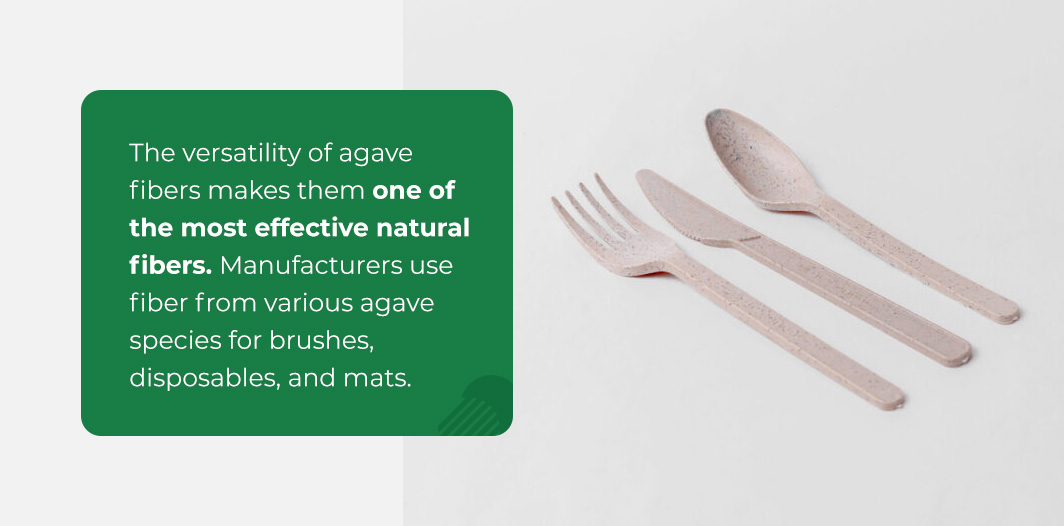
The versatility of agave fibers makes them one of the most effective natural fibers. Manufacturers use fiber from various agave species for brushes, disposables, and mats. You can use agave fibers for other products, too:
- Straws and utensils: Thanks to the natural qualities of agave fibers, they are an excellent material for making sustainable disposables, including biodegradable straws and utensils. Agave straws are durable and compostable, making them an ideal addition to food service providers striving to be more ecologically responsible. These straws are a cost-effective way to comply with policies regarding single-use plastics. They come in different sizes and styles, making them even more versatile for the food industry. With a quality agave straw, you are able to use them for both hot and cold drinks. Agave fiber straws should also be BPA and PFAS-free.
- Cloths: Agave fibers have a great texture for making bath and kitchen products like exfoliating loofahs, flour sack towels, and cleaning cloths. Cloths made from agave fibers are an excellent alternative to sponges made from synthetic polymers. They are ideal for people who want to use ecofriendly alternatives in their households. Agave cloths are typically handwoven, fast-drying, and mold-resistant. They are also highly versatile—you can use them for exfoliating, as a makeup remover, as a bag for soaps, and for cleaning.
- Yarn: Agave fibers are a popular choice for making yarn for different textiles and rope.
- Bags: Agave fibers are a good choice for bags since the fiber is durable. There is an assortment of agave bags from fashion bags, soap-holder bags, and vegetable sacks.
- Paper: The fiber from agave can be made into a pulp and pressed into paper.
- Antiseptic: Agave leaves—which is where the fiber also comes from—have antiseptic properties.
Is Agave Fiber Healthy For You?
Though there is a lot of buzz around how agave can be used as a sustainable fiber, there is equally as much attention on using the agave plant as a food and beverage product. There are numerous types of agave products on the market, including various agave spirits, like tequila, which is made from blue agave. Though agave is versatile, most drinks and foods are made from other parts of the plant and not the fibers.
One of the most popular agave food products is agave nectar or agave syrup. Agave syrup is popular for several reasons, the first being that it is a vegan alternative to sweeteners like honey. It is also a versatile syrup you can use in plant-based drinks, marinades, dressings, and desserts. Agave nectar has a low glycemic index (GI), no fat or cholesterol, and contains small amounts of vitamins B2, B6, and B9 as well as vitamin K, all of which have excellent health properties. Agave fructans (sugars) may also help with constipation and irritable bowel syndrome (IBS).
As with all sweeteners, an excess can still lead to conditions like diabetes and tooth decay.
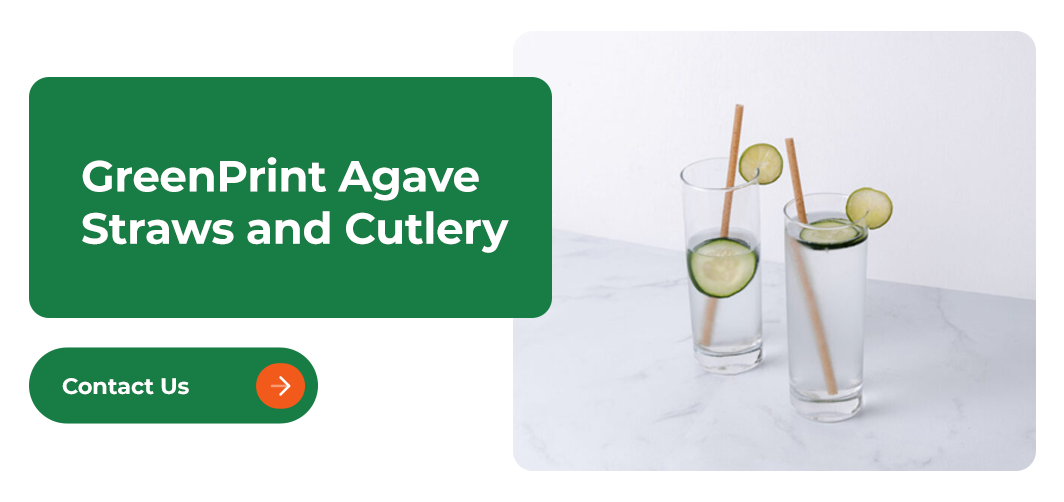
GreenPrint Agave Straws and Cutlery
At Greenprint, we believe in making the disposables industry more sustainable and eco-friendly. With that ethos, we design and manufacture diverse products, including biodegradable agave cups, straws, stirrers, and cutlery. Our high-quality products are made with locally sourced materials that have a positive, lasting impact on the food industry and the environment.
With our products, restaurants and patrons can move away from single-use plastics by using sustainable products that work. Browse our collection of agave products or contact us today with any queries.

